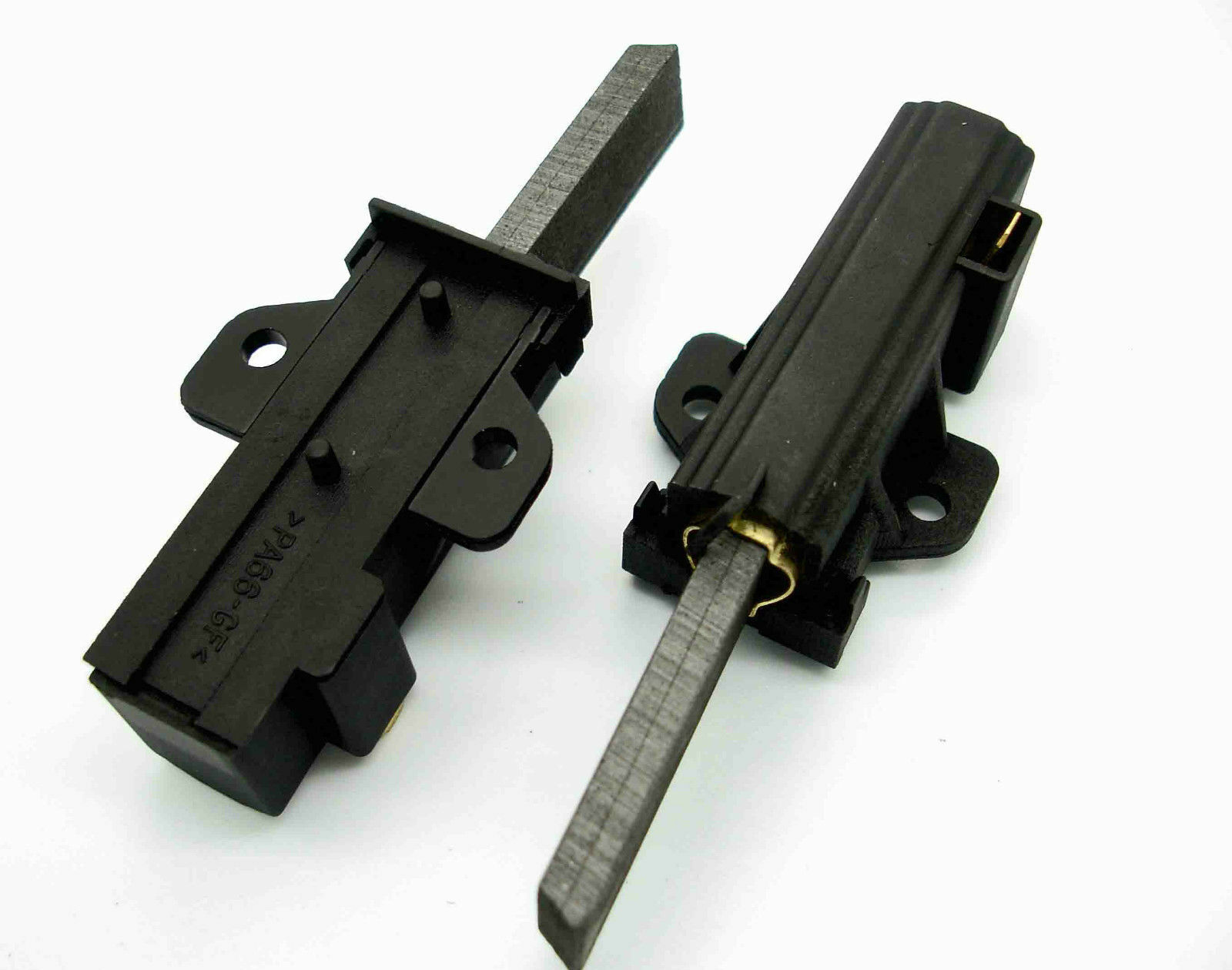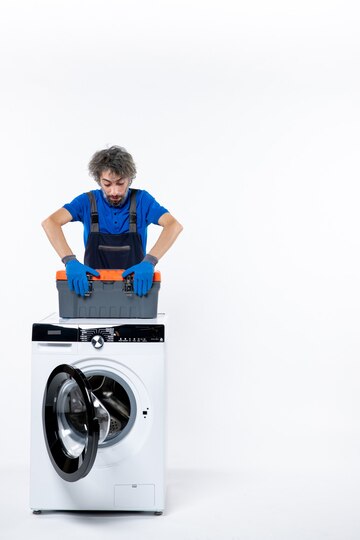Curious about the unsung heroes behind the squeaky-clean clothes your washing machine delivers? Those inconspicuous yet vital components, known as brushes, play a pivotal role in the symphony of washing machine operations.
But here’s the burning question: how long do brushes last on a washing machine? As I delve into the heart of your trusty laundry companion, I’ll unravel the mysteries surrounding brush lifespans.
From revolutions per minute to wear and tear, join us on an exploration that unveils the secrets of these unassuming yet crucial contraptions.
Buckle up as you embark on a journey to understand the longevity of washing machine brushes and how they keep your laundry game spinning!
How Long Do Brushes Last on a Washing Machine?
The lifespan of brushes in a washing machine is a crucial yet often overlooked aspect of its overall performance.
These unassuming components, typically made of carbon, play a vital role in transmitting electrical current to the motor, driving the drum’s rotation.
However, their durability isn’t indefinite. On average, washing machine brushes last around 5 to 10 years, depending on factors such as usage frequency, load size, and the machine’s quality.
Over time, brushes wear down due to friction, leading to reduced efficiency and potential motor issues. Regular maintenance and timely replacement can extend your machine’s lifespan and ensure consistent laundry days.
So, if you’ve ever wondered about those little brushes, now you know – they might be small, but their impact is mighty!

Signs of Worn-Out Brushes
As brushes age, they exhibit telltale signs of wear and tear. Recognizing these indicators can help you anticipate the need for replacement:
- Unusual Noises: If you notice grinding, squealing, or other abnormal sounds during the washing cycle, it might be due to worn brushes. The decreased contact between the brushes and the commutator leads to irregular electrical flow, causing these noises.
- Decreased Spinning Efficiency: If your washing machine’s drum doesn’t spin as vigorously as it used to, worn brushes might be the culprit. The reduced electrical contact hampers the motor’s ability to generate sufficient rotational force.
- Motor Overheating: Excessive friction caused by worn brushes can lead to motor overheating. If you detect a burning smell or feel excessive heat near the motor during operation, it’s a sign that the brushes might be due for replacement.
When Should Washing Machine Brushes Be Replaced?
Knowing the optimal time for brush replacement is vital to prevent more extensive damage:
- Observable Wear: If you can visually inspect the brushes and see that they are significantly worn down, it’s time for a replacement.
- Performance Decline: If you notice any of the aforementioned signs of worn-out brushes, it’s wise to consider replacement sooner rather than later.
- Manufacturer’s Recommendations: Check the manufacturer’s guidelines for recommended replacement intervals. This can vary depending on the machine’s make and model.
By understanding these factors, signs, and maintenance strategies, you’ll be better equipped to ensure the longevity and smooth operation of your washing machine’s brushes.
Read more: What To Do With Old Machine Motor?
Replacing Brushes: DIY or Professional Service?
When it comes to the decision of whether to replace the brushes in your washing machine yourself or hire a professional service, several factors need to be considered.
While DIY projects can be empowering and cost-effective, some tasks, such as replacing brushes in a washing machine, might require a higher level of expertise.
Let’s delve into the details of this dilemma:
1. Consideration of expertise
Replacing brushes in a washing machine involves understanding the intricacies of the machine’s motor and electrical components. If you have experience working with appliances or electronics, you might feel confident in tackling this task.
However, if you’re not familiar with the inner workings of washing machines, it’s wise to consider seeking professional assistance.
Incorrect installation or mishandling of components can lead to more significant issues and potentially render your washing machine inoperable.
2. Steps involved
The process of replacing brushes in a washing machine can vary depending on the make and model.
Generally, the steps involve:
- Accessing the motor by removing panels or covers.
- Identifying the location of the brushes within the motor.
- Removing the old brushes and replacing them with new ones.
- Ensuring proper alignment and securing the new brushes.
- Reassembling the panels and covers.
It’s important to follow the manufacturer’s guidelines and refer to any user manuals or online resources specific to your washing machine model.
3. Potential risks of DIY
Taking on a task like replacing brushes without the necessary knowledge can lead to various risks:
- Electrical Hazards: Working with electrical components without proper precautions can result in shocks or other electrical hazards.
- Damage to the Washing Machine: Incorrect installation or mishandling can cause further damage to the washing machine, leading to more costly repairs.
- Voiding Warranty: If your washing machine is under warranty, attempting a DIY repair might void the warranty if not done correctly.
4. Benefits of professional help
Enlisting the help of a professional service offers several advantages:
- Expertise: Trained technicians have the necessary knowledge and experience to handle washing machine repairs.
- Safety: Professionals are equipped with the right tools and safety measures to avoid accidents.
- Warranty Protection: Reputable service providers often offer warranties on their work, ensuring that you’re covered if any issues arise post-repair.
- Time and Convenience: Hiring professionals saves you time and effort, and you can be confident that the job will be done correctly.

Extending Brush Lifespan Through Maintenance
Proactive maintenance can significantly extend the life of your washing machine brushes:
- Regular Cleaning: Dust, lint, and debris can accumulate on the brushes and commutator, increasing friction. Regularly cleaning these components with a soft brush or cloth can prevent unnecessary wear.
- Lubrication: Applying a small amount of electrical contact lubricant to the brushes can help reduce friction and enhance their performance.
- Load Management: Avoid overloading the washing machine to prevent undue strain on the brushes and motor. Follow the manufacturer’s recommendations for load capacity.
Conclusion
So, how long do brushes last on a washing machine? While the average lifespan of washing machine brushes ranges from 5 to 10 years, several factors come into play, including usage frequency, load size, and the machine’s quality.
Being attuned to signs of wear, such as unusual noises, decreased efficiency, and motor overheating, is essential for timely replacement.
By adhering to regular maintenance routines and promptly addressing worn-out brushes, you not only extend the life of these unsung heroes but also ensure the continued efficiency of your trusty washing companion.







